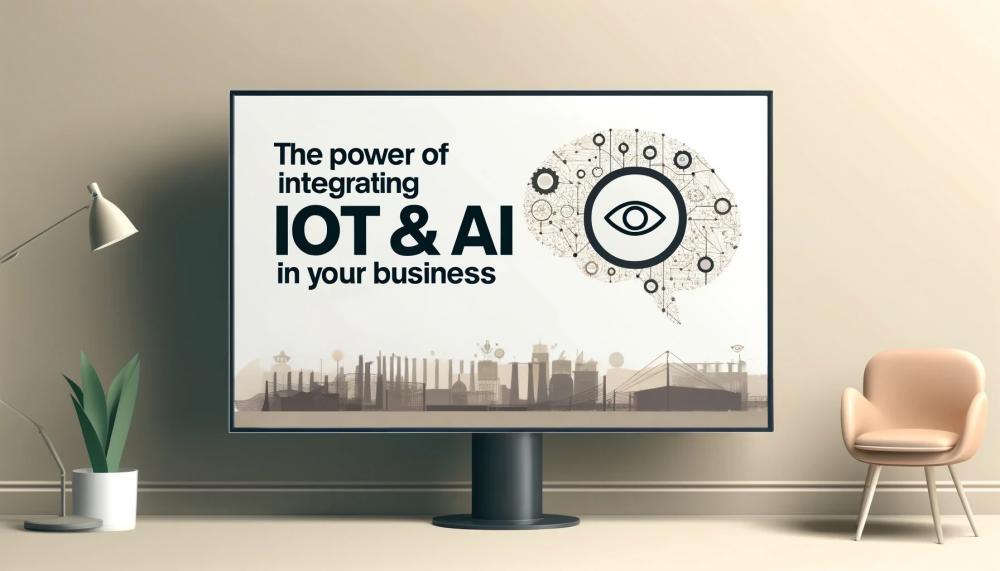Unlocking New Efficiencies: The Power of Integrating IoT and AI in Your Business

Introduction: Exploring the synergy between IoT and AI can revolutionize your business operations. Discover how these technologies streamline processes, enhance decision-making, and drive innovation.
Identifying Common Business Challenges:
- Operational Inefficiencies: Traditional operations are often bogged down with manual processes that are both time-consuming and prone to errors.
- High Maintenance Costs: Unexpected machine downtime can disrupt operations and lead to significant financial losses.
- Data Overload: With the increasing amounts of data collected, businesses face challenges in managing and effectively using this information.
Quantifying the Cost of These Challenges:
- Operational Costs: Inefficient processes can significantly increase overheads and reduce profitability.
- Downtime Costs: Industry studies show that equipment failure is among the top reasons for unplanned downtime, costing businesses substantially in unscheduled repairs and lost productivity.
- Lost Opportunities: Failure to analyze and act upon available data can result in missed opportunities for business optimization and growth.
How IoT and AI Offer Solutions:
- Automated Operations: AI can take over real-time decision-making processes using data from IoT devices, reducing manual labor and minimizing errors.
- Predictive Maintenance: IoT devices monitor the health of equipment and AI analyzes this data to predict and prevent failures, thus saving on maintenance costs and reducing downtime.
- Data Analytics and Decision Support: AI helps in making sense of large volumes of data from IoT devices, providing actionable insights that support better business decisions.
Implementing IoT and AI in Your Business:
- Starting Small: Begin with pilot projects to see the integration of IoT and AI in action.
- Choosing the Right Partners: Select technology partners who have expertise in IoT and AI to ensure smooth integration.
- Scaling With Confidence: Once pilot projects show success, scale the solutions across other areas of your business.
Conclusion: The integration of IoT and AI holds tremendous potential to transform various sectors of business. By automating processes, enhancing data analytics, and enabling intelligent decision-making, companies can achieve higher operational efficiency and better customer satisfaction.
Call to Action: Are you ready to harness the power of IoT and AI in your business? Contact us today for a consultation or visit our services page to learn how we can assist you in this transformation.
-
Manufacturing
- Predictive Maintenance: Use IoT sensors to monitor equipment and AI to analyze data for predicting failures before they occur, reducing downtime and maintenance costs.
- Supply Chain Optimization: Implement IoT to track goods and use AI for real-time inventory management and to optimize supply chain logistics.
-
Healthcare
- Remote Patient Monitoring: Use IoT devices to continuously monitor patient health remotely and AI to analyze the data, alerting healthcare providers to potential health issues before they require acute intervention.
- Personalized Treatment Plans: AI algorithms can analyze data from IoT-enabled wearable devices to tailor treatments to individual patients' health status and needs.
-
Retail
- Smart Inventory Management: Utilize IoT for real-time tracking of inventory levels and AI to predict stocking needs and automate ordering processes.
- Customer Experience Enhancement: Implement IoT devices like smart mirrors and use AI to provide personalized recommendations and virtual fitting rooms.
-
Agriculture
- Precision Farming: Use IoT sensors to monitor soil moisture, crop health, and weather conditions, with AI analyzing the data to provide insights for optimal planting, watering, and harvesting.
- Livestock Monitoring: Equip livestock with IoT devices to monitor health and activity levels, using AI to predict and prevent disease spread.
-
Energy
- Smart Grid Management: Integrate IoT sensors throughout the energy system to monitor consumption and outages, with AI optimizing energy distribution and predicting peak loads.
- Renewable Energy Optimization: Use AI to analyze data from IoT sensors on solar panels or wind turbines to maximize energy output based on weather conditions.
-
Transportation and Logistics
- Fleet Management: Equip vehicles with IoT devices for real-time tracking and use AI to optimize routes and reduce fuel consumption.
- Autonomous Vehicles: Use AI to process real-time data from IoT sensors in vehicles to navigate and respond to road conditions safely.
- Container Management: Tracking and managing the movement of the containers